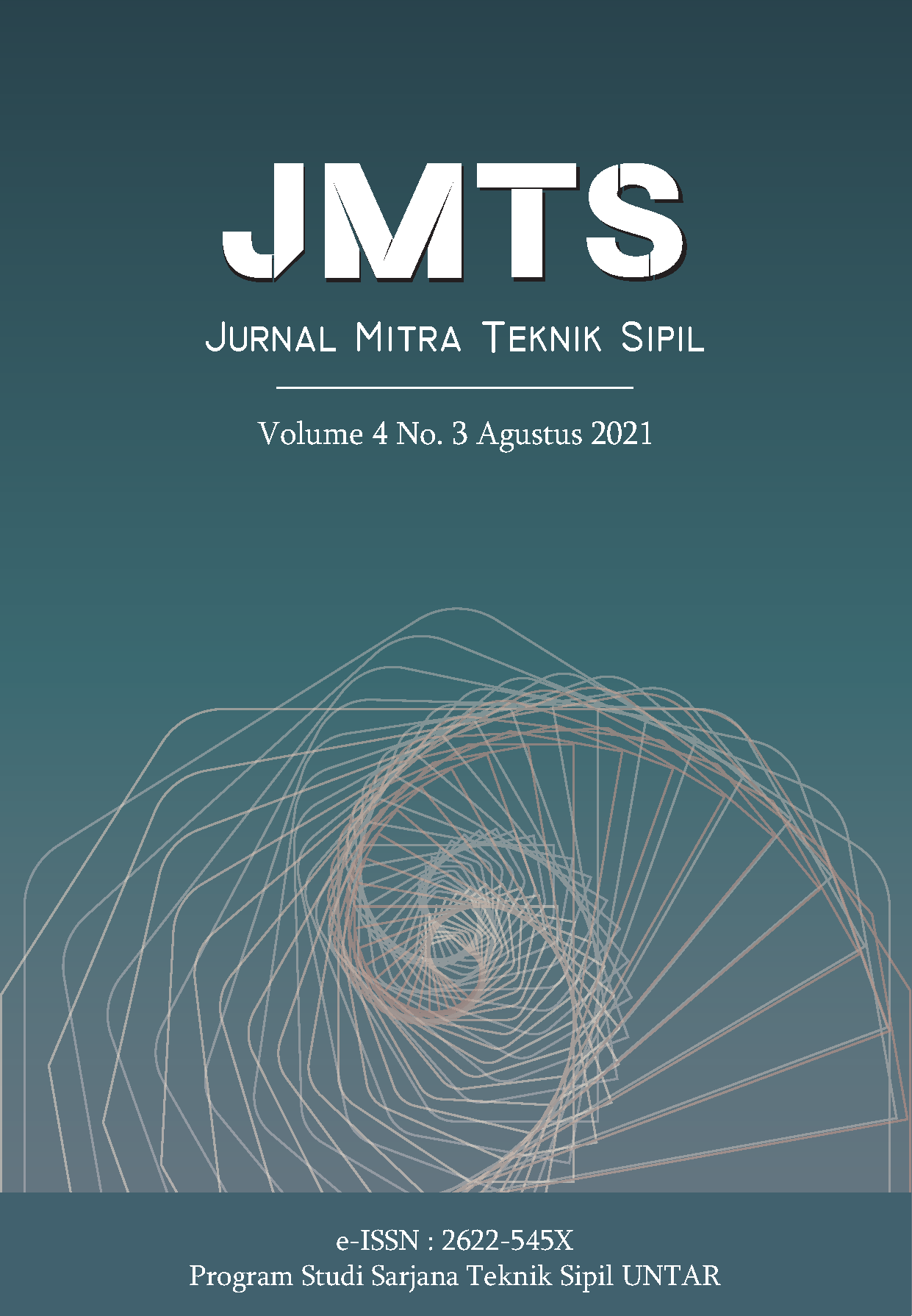ANALISIS PENGARUH INDEKS WALKABILITY TERHADAP KEINGINAN BERJALAN KAKI DARI DAN MENUJU STASIUN TRANSPORTASI UMUM
Main Article Content
Abstract
Although the construction of public transport infrastructure is underway, the poor quality of the pedestrian paths may result in users being reluctant to use public transport. Therefore, a method to find out the walking path according to the user's desire to travel is needed. This study aims to determine the factors formed and the influence of socials-demographic characteristics on the desire to walk to and from public transportation stations in Indonesia. The statements contained in the questionnaire were made based on the walkability index that has been used previously in several countries and confirmed by factor analysis. The results of the factor analysis showed that from the 13 variables tested, there were 4 variables which were reduced until the remaining 9 variables formed 2 factors. The two factors are the convenience factor and the practicality and safety factor. socials-demographic factors such as age, gender, walking frequency, walking distance, place of residence, walking purpose, and monthly expenses did not have a significant influence on the pleasantness factor as well as the practicability and safety factor.
ABSTRAK
Meskipun pembangunan infrastruktur transportasi umum sedang dilakukan, kualitas jalur pejalan kaki yang buruk dapat mengakibatkan pengguna enggan untuk menggunakan transportasi umum. Oleh karena itu suatu metode untuk mengetahui jalur perjalan kaki yang sesuai dengan keinginan berjalan pengguna sangatlah diperlukan. Penelitian ini bertujuan untuk mengetahui faktor-faktor yang terbentuk dan pengaruh karakteristik sosial-demografis terhadap keinginan berjalan kaki dari dan menuju stasiun transportasi umum di Indonesia. Pernyataan-pernyataan yang terdapat dari kuesioner dibuat berdasarkan indeks walkability yang telah digunakan sebelumnya pada beberapa negara dan dikonfirmasi dengan analisis faktor. Hasil analisis faktor menunjukkan dari 13 variabel yang diuji terdapat 4 variabel yang direduksi hingga tersisa 9 variabel yang membentuk 2 faktor. Kedua faktor tersebut adalah faktor kenyamanan dan faktor kepraktisan dan keselamatan. faktor sosial-demografis seperti usia, jenis kelamin, frekuensi berjalan kaki, jarak kemampuan berjalan, tempat tinggal, tujuan berjalan, dan pengeluaran tiap bulan tidak memberikan pengaruh yang signifikan terhadap faktor kenyamanan maupun faktor kenyamanan dan keselamatan.
Article Details
References
D’Orso, G., & Migliore, M. (2020). A GIS-based method for evaluating the walkability of a pedestrian environment and prioritised investments. Journal of Transport Geography, 82(June 2018)
Liu, Y., Yang, D., Timmermans, H. J. P., & de Vries, B. (2020). The impact of the street-scale built environment on pedestrian metro station access/egress route choice. Transportation Research Part D: Transport and Environment, 87(August)
Schafer A. (1998). Transportation Research Part A: Policy and Practice, 1998, vol. 32, issue 6, 455-477
Kusbiantoro, B. S. (2006). Kebutuhan dan Peluang Pengembangan Fasilitas Pedestrian Pada Sistem Jalan di Perkotaan. LPPM, ITB.
Putranto, L. S., & Khuana, R. B. (2021) . Analisis Indeks Walkability dalam Menilai Kualitas Jalur Pejalan Kaki Terhadap Keinginan Berjalan Kaki Dari dan Menuju Stasiun Transportasi Umum. Tarumanagara International Conference on the Application of Technology and Engineering.
McLeod S., Scheurer J., Curtis C. (2017) Urban Public Transport: Planning Principles and Emerging Practice. Journal of Planning Literature 1-17



